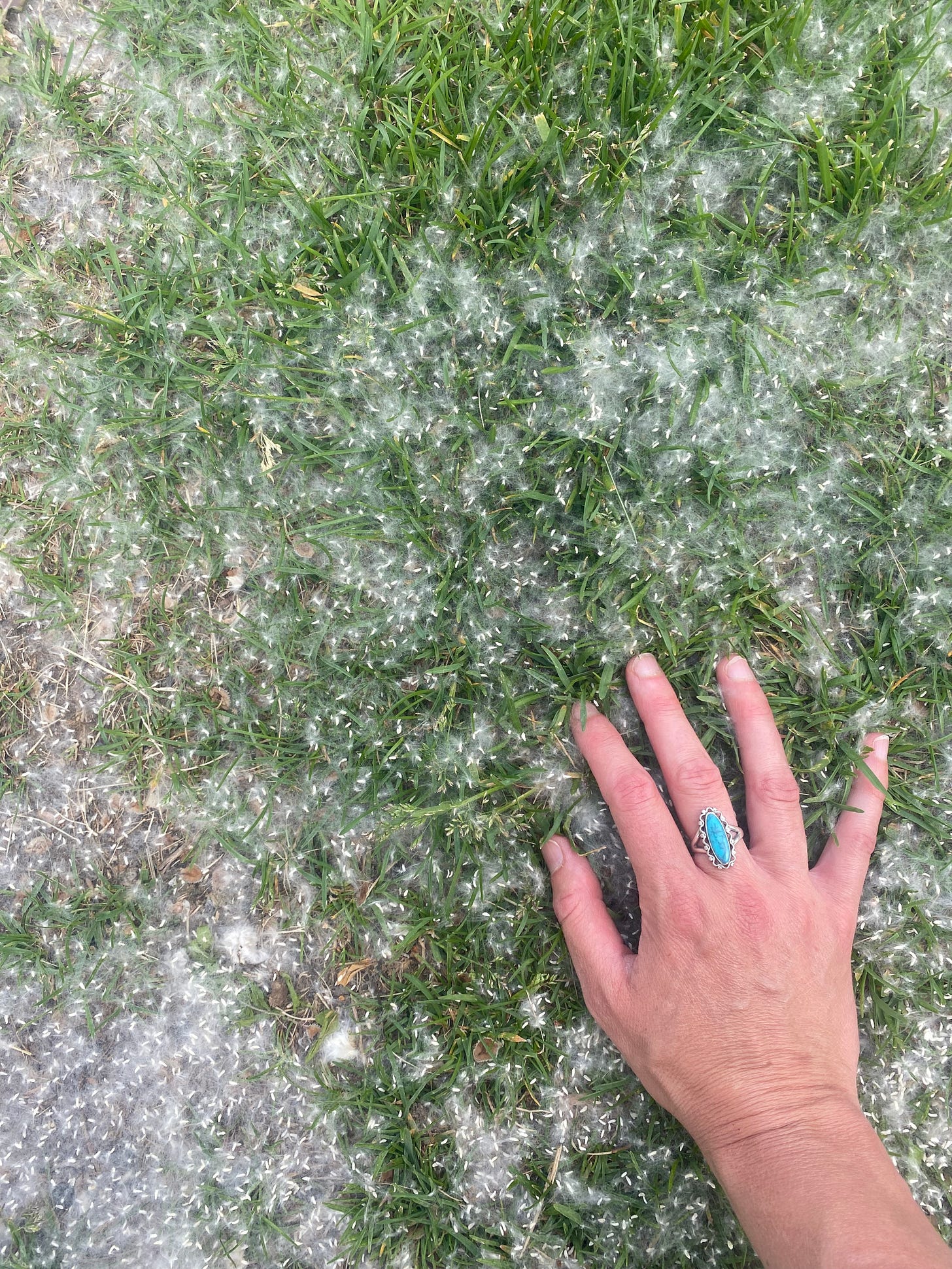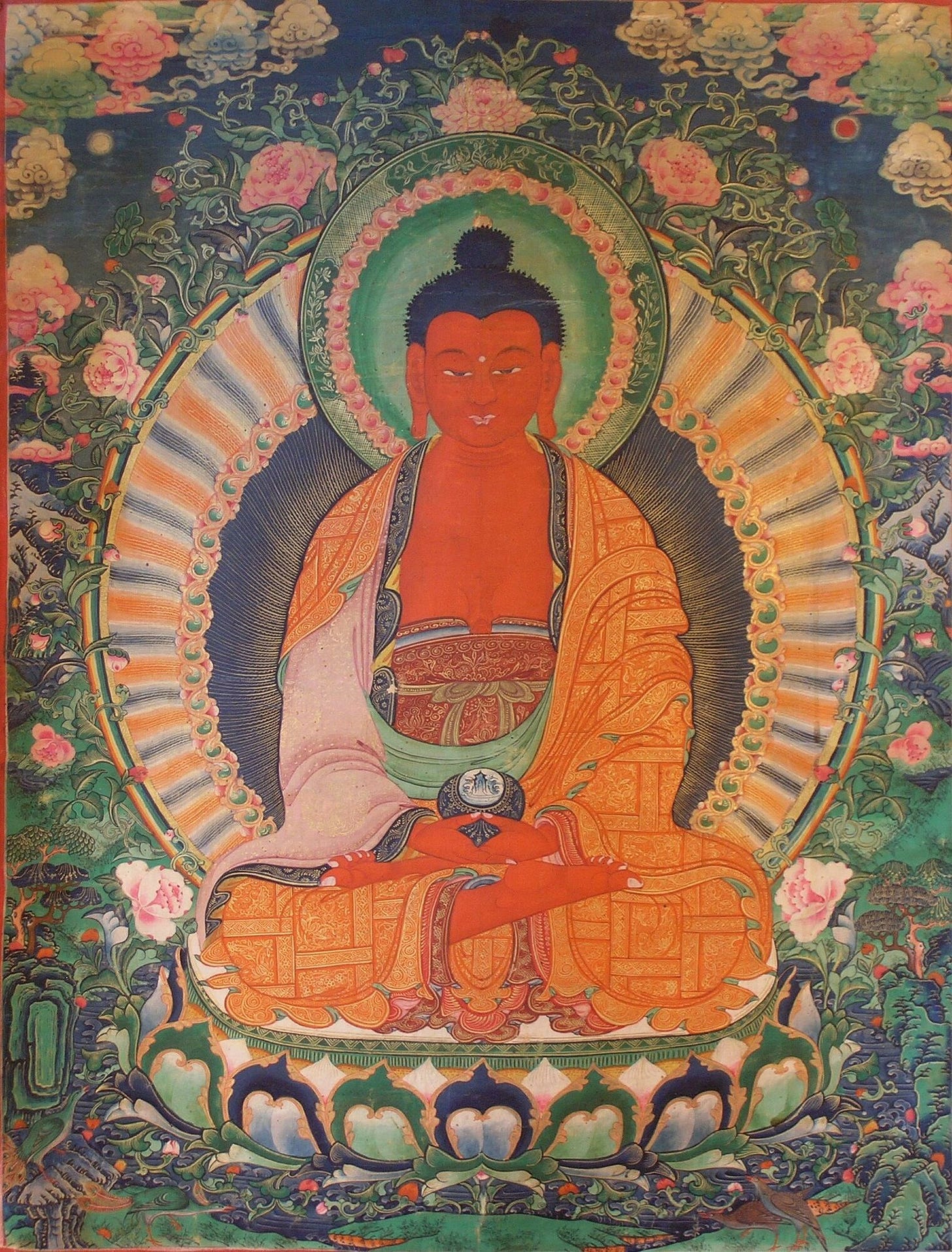Why Compassion Doesn't Do It For Me
In Praise of Big Open Heartedness + Stuff I've Loved Lately
Sending you one of my favorite essays from the archive today + stuff I’ve loved lately. Paid subscribers will also find links to a recorded creative writing class class + text with prompts.
Thank you for being here with me on Substack while I take some time this summer to work on longer writing projects. I’ll be back in August with brand new public posts.
Happy Saga Dawa Düchen to all those who celebrate! ☸️ 🌕 My kids and I will be hanging new prayer flags with my family today to celebrate the Buddha’s enlightenment. May all the prayers you make for yourself and others come true!
Hi y’all,
Lately I’ve been thinking about big open heartedness. I heard this term recently in a talk by a Dzogchen teacher, Lama Lena. She uses big open heartedness as a way to describe the Sanskrit Buddhist term, bodhichitta, which literally translates to “awakened mind.”
But like the best words, bodhichitta evades translation. It feels like the kind of word we should leave alone, the way we leave so many European words alone—déjà vu, saudade, duende. They evoke states of being. They summon a host of qualities rather than trying to define a quality as singular.
Bodhichitta is like that. A tiny poem contained within a single word.
Big open heartedness feels like the second line to a poem. It alludes to a sense of geography, to a place we carry around inside of us but isn’t anywhere particular. The lack of particular location makes big open heartedness feel like a dizzying challenge, something that sounds nearly impossible, but isn’t. When you consider how cruel the world is, how terribly unfair, and how tedious that cruelty and unfairness can be, how all of it is beyond repair, beyond hope, and inevitably, how none of this is going to end well—big open heartedness feels like a rebellion.
It’s funny because people get into meditation to become happier, and you do, but what actually seems to happen is that you experience pain in a more open-hearted way. I suppose that’s why early English translators reached for the word compassion when they were trying to define bodhichitta. Compassion means with suffering, which is ironic because the Buddha says there is a way to end suffering—and yet the way we’re supposed to end suffering is through with suffering. I’m surprised more people don’t run away from Buddhism when they hear they will develop more with suffering. Maybe that’s why there are so many Buddhist-curious people out there, but really not many who want to get deep into the with suffering business.
The vision of a healthy mind in Buddhism is someone who feels pain with others but in a relaxed way that serves a source of refuge. This seems to be possible because there is actually enough space for everything to happen. Big open heartedness itself is a form of spaciousness. When we feel suffering without pushing or pulling at it, that is how we find freedom. Pain exists, but it does not own us. We are too vast to be owned. At some level, the pain is so indistinguishable from life itself it seems ridiculous to push pain away.
I was in my bedroom the other week when I heard a thud on the window. I knew what it was before I saw it. A little bird. I stood up to check to see if it was alright. On the ground, a lovely goldfinch lay motionless. His feet curled underneath him. He had a trim orange beak and a black cap and sunny yellow feathers. He was dead.
I happened to be in a Dzogchen meditation class when this happened. I sat back down on my cushion, a goldfinch shaped-knot in my chest.
We were reading texts about how awareness is like a clear light, unceasing, infinite, unborn. Even so, I really wanted the goldfinch to still be alive. I felt with suffering. He wanted to live and I wanted him to live, and I didn’t want dying to be involved.
I told myself: This isn’t so bad. Goldfinches don’t live very long anyway. This isn’t a bad way to die, at the end of summer. He didn’t know what hit him. There are so many other ways for small birds to die which are more unpleasant. Excruciating, even. Also, it wasn’t the big windows in the living room that killed in but the small ones in the bedroom, and perhaps this is some brutal Darwinian culling of goldfinches who don’t see window reflections well. And it was entirely possible that instant death on a window while a meditation class is going on might be some kind of blessing for the goldfinch, and maybe the goldfinch’s mind-stream continued to fly straight through the window into some radiant wild bird Pure Land.
None of this actually soothed the goldfinch-shaped knot in my chest.
It occurred to me that I loved the goldfinch.
How could you not love such a small, bright creature as it balances at the end of a blade of prairie grass, eating seeds? How can you see a goldfinch and not feel your heart melt a little?
Chögyam Trungpa talks about bodhicitta, and the bravery of it, in terms of a kind of sadness. “When tenderness tinged by sadness touches our heart, we know that we are in contact with reality.” Sadness, in a culture obsessed with happiness, is supposed to indicate pathology. But sadness when it’s related to an easeful, tender way, accords vividly with suffering. A melancholia that does not signal alienation, but a togetherness with everything. The terms are not closed. It does not coddle, but it assures. It does not enable, but it understands. It feels sorry for, but does not excuse. It feels love for, but does not insist.
I was doing myself and the goldfinch a kind of unnecessary injury by trying to make myself feel better. I wanted the goldfinch to be alive, and to be alive is to die. One day I will also die.
I started wishing the goldfinch something more than life and death. A third option. What do I want someone to wish for me when I die? Not eternal life in this form, but a recognition of how things are, not how I’d like things to be. I want to die into that greater knowing, into that big open heartedness.
My husband was at home working in another room. When my class ended, I told him what happened to the goldfinch. He thought about the hungry-looking juvenile fox who has been roaming the neighborhood for weeks, trying to catch rabbits. Then he had the idea of putting the goldfinch’s body out in the backyard under the bushes so that some other hungry animal, like the fox, could eat it, and live.
He carried the goldfinch to the soft bed of leaves behind the shed near the evergreen bushes. I wished the goldfinch the same thing I’d want someone to wish for me.
Stuff I’ve loved lately:
Sky Dancer: The Secret Life Story and Songs of Yeshe Tsogyal, translated by Keith Dowman. This is a biography of one of most important female figures in Tibetan Buddhism. Tibetan spiritual biographies do a lot of what I think some of the best contemporary speculative fiction1 does: place us in the realness of mythopoetic experience in order to describe states of awareness that can’t be captured by ordinary realism. I do love a good modern dharma commentary, but reading a very old sacred texts like this one feels so joyful, surprisingly weird, and adventurous.
This Guru Viking interview with my heart teacher Lama Justin von Bujdoss and Charley Morely is about the tension between conserving Tibetan Buddhist practices and adapting dharma to the lives of contemporary people living in a global culture. It made me think that it would be a great loss if we ever forgot the culture, place, and people who kept these teachings alive and brought them out of Tibet—often at the peril to their own lives and well-being—to the rest of the world. Listening to this episode made me realize that I’m not practicing so much in a new “Western convert tradition,” but rather I’ve been lovingly invited by others to participate in a beautifully long, beautifully deep lineage.
Nicole Olive (aka “My Nonprofit Boss”) has a hilarious sketch of a French queer period piece very à la Portrait of A Lady on Fire. Happy Pride! 🏳️🌈
Dianna Lopez is my go-to background music for writing lately. Soothing, chill guitar loops, but still bright enough to not make me sleepy.
This snippet of an interview with novelist Elif Shafak on why storytelling is so vital for the moment we’re living through lifted me up. Her newsletter is amazing too.
If I’m going to be addicted to the news cycle, I might as well addicted someplace that isn’t owned by billionaires destroying our world. So I tentatively stepped back onto Bluesky (@sarahkokernot) and rejoiced at all the amazing, brave people in L.A. who protested ICE raids over the weekend.
One of my favorite writers on Substack,
, has a great Bluesky starter pack on engaged Buddhist and through it, I discovered this awesome paper about Tibetan Buddhism, indigeneity and environmental justice. And then! After I read the whole thing, I realized it was written by Dekila Chungyalpa! She’s the daughter of my teacher’s teacher and was very glad I went down that internet rabbit hole. interviewed essayist and poet about creativity, mindfulness, and Islam. I really connected to the the way Beshir uses recitation of prayer and mantra. It’s so cool to read about how these kinds of practices span across religious traditions.Mini-Salon on July 10th
The next mini-salon with me and
will take place on Thursday, July 10th from 12-12:40pm CST. Our topic next month is “Feeding the Creative Well: Resetting and Reenergizing Your Writing.” It is a normal part of the process to feel dried up creatively every once in a while. We’ll talk about what to do when this happens—and how to fill your well up again so that you feel brimming with new ideas, energy, and inspiration.Sign up here for July’s mini-salon and ask a question as a paid subscriber.
And if you missed May’s mini-salon, you can read our main takeaways and watch the recording here: “Why Even Make This: Finding Spiritual and Practical Meaning In The Creative Process.”
Creative Writing Class + Exercises
Thanks a million to everyone who signed up for this month’s class on “How To Make Your Own Writing Oracle!”
We had a wonderful class and used bibliomancy, poetry, and collage as methods to help us start long writing projects and get us unstuck in our work. We also focused on how to ask deeper, more interrelated questions for our writing—which is itself a kind of oracular process.
Paid subscribers can find the video recording along with the text with prompts here. And all subscribers can watch a preview with a free exercise.

Speculative fiction is a big umbrella category that includes sci-fi, fantasy, fabulism, weird fiction, and magical realism.







Thank you so much for this truly heart. healing share for I have been so shamed by my family and I thank you for sharing your gift
So much here to savor, Sarah! I especially like the reframing of compassion as Big Open Heartedness. Just yesterday, I was listening to the dharma talk at Upaya and Noah, who gave it, reminded me of a Japanese phrase: mono no aware. The slender sadness. That feeling that arises when we truly understand the fleeting impermanence of a beloved one... an indescribable mix of sadness but along with happiness and gratitude and bittersweetness. And more. Yes, I agree.... let's leave the original phrases alone and last them stand on their own with all they carry.